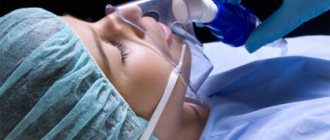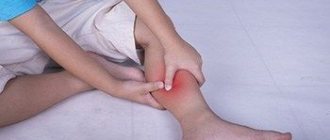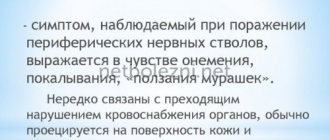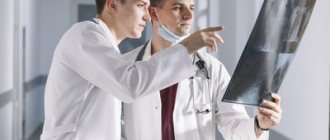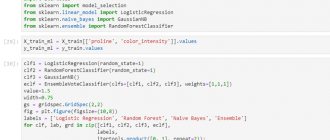Many of us are faced with the problem of neck pain and the inability to find adequate treatment for the symptoms of cervical osteochondrosis. Often the pain is accompanied by signs of VSD and panic attacks. Today it is customary to attribute all problems associated with VSD and cervical osteochondrosis to an unhealthy sedentary lifestyle, constantly spending time at the computer and on the phone. But what should we do if our whole life: work and a considerable part of our leisure time is connected with PCs and gadgets? Accept that we will have to take painkillers for the rest of our days, and that our pain, VSD and panic attacks are incurable? Or radically change your usual lifestyle? Modern neurologists are confident that such extreme measures are not at all necessary, and that modern medicine has found methods to combat VSD and panic attacks in cervical osteochondrosis.
So, if you are worried about neck pain and panic attacks with cervical osteochondrosis, then before choosing the appropriate treatment, you need to understand: why do neck pain and other symptoms attributed to cervical osteochondrosis occur, and why do panic attacks occur?
VSD and cervical osteochondrosis – what to treat?
Are you worried about neck pain? Against the background of constant pain, have you developed increased anxiety, weakness, tearfulness, insomnia and sensitivity to changes in atmospheric pressure? Or maybe you are already experiencing unexpected attacks of rapid heartbeat, numbness in the arms and legs, panic attacks and other symptoms of VSD and cervical osteochondrosis?
If you come to the doctor with such complaints, then most likely you will be diagnosed with “cervical osteochondrosis” and will be recommended to move more, do exercises, undergo a massage course, and if you have complaints of panic attacks with cervical osteochondrosis, you will definitely be prescribed medication.
In addition, if a person is bothered by the above symptoms, then along with and even instead of a diagnosis of osteochondrosis, the patient may be given VSD (vegetative-vascular dystonia), because the symptoms of the two diseases suspiciously coincide.
If you become the unfortunate owner of both diagnoses, then the number of pills you use will double. But will all these methods help get rid of constant pain and panic attacks with cervicothoracic osteochondrosis? Ultimately, many patients discover that they are “incurable.”
Therefore, before taking medications “for all diseases,” you should ask a number of logical questions: what comes first and what exactly needs to be treated – VSD and panic attacks, or cervical osteochondrosis? Why are the symptoms the same, but the treatment is different? How to distinguish VSD and cervical osteochondrosis? We will try to find answers to all these questions.
Clinical picture
Vegetative-vascular dystonia is characterized by a variety of clinical manifestations. Their large number is due to the disorder of all basic vegetative functions - breathing, blood supply, sweating, urination, digestion, peristalsis. In most cases, symptoms of VSD occur with cervical osteochondrosis of grade 2, 3, when changes in the vertebrae and discs have become irreversible. Often, complications of the disease—protrusions, hernial protrusions, discogenic myelopathy—lead to functional disorders.
Cardiac symptoms
Most often, VSD is clinically manifested by tachycardia - an arrhythmia characterized by a heart rate of more than 90 beats per minute. There are sensations of interruptions in the functioning of the heart, its freezing, vascular pulsation not only in the back of the neck, but also in the legs and arms.
One of the leading symptoms of VSD is pain in the cardiac region. It can be acute, but more often it is dull, aching, pressing. Diadynamic functional disorders are also noted. Blood pressure increases or decreases, blood and lymph circulation is disrupted.
Pain in the heart area.
Respiratory system
Vegetative-vascular dystonia is characterized by respiratory symptoms that occur against the background of dysregulation of the respiratory system. Tachypnea (rapid breathing), sensations of lack of air, heaviness, congestion in the chest, and severe shortness of breath, which resembles an attack of bronchial asthma, are observed. A patient with cervical osteochondrosis has difficulty in fully inhaling and exhaling.
Nervous system
The psychoneurological symptoms of VSD are so pronounced that they often lead to panic attacks - sudden attacks of unmotivated fear, increased anxiety, and restlessness. In severe cases, patients are diagnosed with depression. Vegetative-vascular dystonia is manifested by lethargy, weakness, and rapid fatigue with minor exertion.
Patients become irritable, tearful, and mental and physical performance decreases against the background of psycho-emotional instability. Gradually, they develop weather dependence, often experience headaches, and experience a disorder in the change of phases of sleep - it becomes superficial and restless.
Panic attacks, irritability, tearfulness are symptoms of pathology.
Other symptoms
A disorder of the autonomic system makes undesirable adjustments to the functioning of almost all human life systems. Symptoms of VSD rarely appear in isolation. More often they are combined with each other, which significantly worsens the patient’s well-being and complicates diagnosis.
| Autonomic disorders | Characteristic signs |
| Thermoregulation disorders | Body temperature is labile - it rises during the day to 38 °C, and then decreases to 35 °C. The patient feels chilly, and then suffers from fever and excessive sweating. Thermoregulatory disturbances may occur from time to time or become permanent |
| Digestive and peristaltic disorders | They manifest themselves as dyspeptic, dyspeptic disorders - attacks of nausea and vomiting, belching, pain in the epigastric region, increased gas formation. Constipation or diarrhea is common |
| Genitourinary disorders | Sexual desire persists against the background of anorgasmia. In the absence of any pathologies of the urinary tract, the urge to empty the bladder becomes more frequent and urination becomes painful |
VSD and panic attacks are disguised as cervical osteochondrosis.
VSD (vegetative-vascular dystonia) is one of the most tricky diseases. VSD and accompanying panic attacks are often disguised as cardiovascular, mental and other health problems. Vegetative-vascular disorder is associated with disturbances in the functioning of the autonomic nodes of the nervous system. These nodes (ganglia) are responsible for the normal functioning of almost all functions of our body: blood circulation, respiration, digestion, reproduction, excretion, metabolism and growth. Therefore, if there is a malfunction in their work, then a general malaise occurs, the variety of components of which ranges from headaches to disorders of the gastrointestinal tract, from mild weakness to a state of loss of consciousness. With VSD and panic attacks, a person does not understand what exactly is hurting him, and numerous examinations do not reveal any pathologies.
In addition, vegetative nodes are located throughout the body, and if they are unhealthy, then a person immediately feels tension or pain in the very part of the body where the unhealthy node is located. That is, if the nerve node in the cervicothoracic region does not work correctly, then first of all this will affect the muscles of the neck. And the first thing the patient will think about is “cervical chondrosis.”
Therefore, if you have a sore neck or are already experiencing panic attacks due to cervical osteochondrosis, then the problem is precisely that VSD, panic attacks and other symptoms are disguised as the so-called “cervical osteochondrosis.” Surprisingly, even such a common component of VSD as panic attacks is beginning to be misinterpreted as a sign of problems with the spine.
Understanding how the autonomic nervous system works also explains why neck pain typically occurs long (perhaps several years) before panic attacks occur. And with the development of panic disorder, patients often complain that neck pain (“cervical chondrosis”) begins to bother them right before a panic attack!
Now it becomes clear why outdated methods of treating cervical osteochondrosis and panic attacks do not bring the long-awaited results, and people live for years with symptoms of cervical osteochondrosis and panic attacks! It’s just that the treatment is aimed completely at the wrong area where it should be - at cervical osteochondrosis and the spine, and not at the VSD and the nervous system.
Causes and risk factors
The main reason for the development of osteochondrosis in humans is the ability to walk upright, acquired with evolution. When walking, the vertebrae put excessive pressure on each other. Every year this leads to the fact that the amount of intervertebral fluid and connective tissue between the vertebrae decreases, as a result, the bones begin to rub against each other, causing severe pain.
The longer cervical osteochondrosis develops without the necessary treatment, the less chance there is to stop the degenerative processes. In old age, it is almost impossible to restore connective tissue.
Cervical osteochondrosis in old age is predominantly a natural process that is not associated with the influence of external factors. If the problem begins to develop at an early age, if the painful sensations intensify too quickly, it is imperative to look for the cause of this disorder.
The development of cervical osteochondrosis at an early age is most often caused by the following factors:
- Lack of physical activity in daily life. In the modern world, a person leads a predominantly sedentary lifestyle - he works all day in an office, spends time in the evening sitting on the couch or at the computer, and often drives a car;
- In the process of performing work tasks, the human body often takes an unnatural, tense position (strong forward deviation when working at a computer);
- Excessive exercise. The opposite reason is playing sports with uncontrolled loads. Not only ordinary citizens, but also professional athletes face this problem;
- The reasons that cause the spine to be in the wrong position are flat feet, wearing uncomfortable high-heeled shoes, scoliosis, arthritis, etc.;
- Abuse of junk food, obesity;
- Severe hypothermia of the cervical spine;
- Nervous stress – frequent stress in everyday life and at work, lack of proper sleep at night.
The diagnosis of cervical osteochondrosis is a myth.
Competent doctors know that the diagnosis of cervical osteochondrosis is one of the most persistent myths in medicine. And those who are less knowledgeable blame a great many problems on osteochondrosis, including panic attacks and symptoms of VSD.
Scientists have long discovered that osteochondrosis is a natural process of aging of the body. Even teenagers have signs of osteochondrosis on x-rays!
We inherited osteochondrosis from our ancient ancestors homo erectus (homo erectus), this is a natural consequence of the evolution of our species and the acquired ability to walk upright.
In fact, osteochondrosis itself does not contribute to the development of VSD and panic attacks and does not give rise to any pronounced clinical complaints. Even neck pain is not a sign of osteochondrosis! Not to mention other symptoms that are attributed to the diagnosis of cervical chondrosis.
What causes panic attacks, neck pain, and other symptoms that are so often attributed to cervical osteochondrosis?
Prevention measures
Clinical manifestations of VSD can be avoided by excluding from the usual lifestyle situations that provoke relapses of cervical osteochondrosis. You cannot stay in one body position for a long time or lift heavy objects. You should do physical therapy every day, take vitamins, and replenish your diet with fresh vegetables, berries, and fruits.
Neck pain and panic attacks - what is the reason?
Let's take a closer look at the reasons why not only panic attacks actually occur with cervical osteochondrosis, but also neck pain.
Firstly, as we found out, the root cause of the disease lies precisely in the disorder of the autonomic nervous system, that is, in the VSD. And cervical osteochondrosis has nothing to do with it.
What happens when the functioning of the autonomic nodes of the nervous system is disrupted? Symptoms such as pain and tension in the neck occur due to muscle hypertonicity, that is, due to persistent muscle spasm in this part of the body. And the cause of the spasm is the excessive production of the neurotransmitter hormones adrenaline and noradrenaline, which are localized precisely in the autonomic nodes of our nervous system.
All other symptoms of cervical chondrosis and panic attacks (tachycardia, headache, numbness of the limbs, fatigue, insomnia, etc.) are standard signs of VSD and have the same causes. [More details: All symptoms and signs of VSD] The fact is that adrenaline and norepinephrine bring our entire body into a state of readiness to “start”. This state is adequate only in extreme situations. In other cases, it only depletes the reserves of our body and our psyche, which leads to nervous breakdowns and panic attacks.
Panic attacks when diagnosed with cervical osteochondrosis are a very common complaint. This is the second “unbearable” symptom of osteochondrosis after back and neck pain. It also happens that a person does not pay attention to muscle pain for a long time and considers it an integral part of his life, and focuses on the disease only when he is overcome by an inexplicable animal fear, fear of death, a condition close to a heart attack - a panic attack. It was then that it turned out that the first sign of the development of a vegetative-vascular disorder was muscle pain, which amounted to “cervical chondrosis” and which led to panic attacks.
Symptoms of VSD
Vegetative-vascular dystonia is a disease of the human nervous (or, in medical terms, autonomic) system. It is formed due to incorrect transmission of neurological impulses and, as a result, an incorrect reaction of vascular tissue to loads and stress. In this case, either the vessels are constantly in a tense state (this is VSD of the hypertonic type with an increase in pressure), or the walls of the vessels are constantly relaxed (this is VSD of the hypotonic type with a decrease in pressure). As a result, a person develops and experiences:
- Fatigue quickly, low fatigue threshold.
- Periodic fluctuations in blood pressure, its increase or decrease after physical or mental stress, as well as for no apparent reason.
- Headache.
- Sleep disorder.
- Panic attacks, fears, depression.
Important: VSD is a separate disease only in the post-Soviet space. In European countries, vascular dystonia is a syndrome (sign) of other diseases. For example, neurological disorders or osteochondrosis of the neck.
Cervical osteochondrosis, VSD and panic attacks. Treatment.
People with VSD and panic attacks due to cervicothoracic osteochondrosis often do not know where and how it is treated. Patients undergo courses of massage, acupuncture, psychotherapy, take courses of medications, etc. But at best, it only provides temporary relief from the symptoms of muscle tension and panic attacks. It is important to understand that with “cervical osteochondrosis”, VSD and panic attacks, the symptoms of pain in the neck and back are caused by persistent muscle spasm of the deep muscles of the neck, which the massage therapist’s hands cannot reach, and therefore no massage can solve the problem. And the root cause of pain and panic attacks with VSD and “cervical osteochondrosis” will not be eliminated.
Since the cause of muscle pain and panic attacks during VSD is actually not related to cervical osteochondrosis, treatment should be aimed at the nervous system. The impact of the treatment must be quite deep and powerful and at the same time very careful and precise. Among modern methods of traditional medicine, there is a unique technique that meets these requirements - laser treatment: intravenous laser therapy with red or blue lasers and infrared laser therapy of the skin projection of excited autonomic ganglia.
One of the few places that can offer such treatment and where they have been effectively helping to get rid of panic attacks, VSD and “cervical osteochondrosis” for more than 20 years is the Clinical Center for Autonomic Neurology. The clinic's doctors are qualified neurologists-vegetologists who specialize in the treatment of VSD and panic attacks. If you are diagnosed with “cervicothoracic osteochondrosis”, you can contact us, we will conduct a thorough diagnosis of the state of your autonomic nervous system, and treatment will be aimed specifically at eliminating the source of the disease, that is, returning the nervous system to harmonious functioning, which will relieve you of all symptoms cervical osteochondrosis, VSD and panic attacks.



